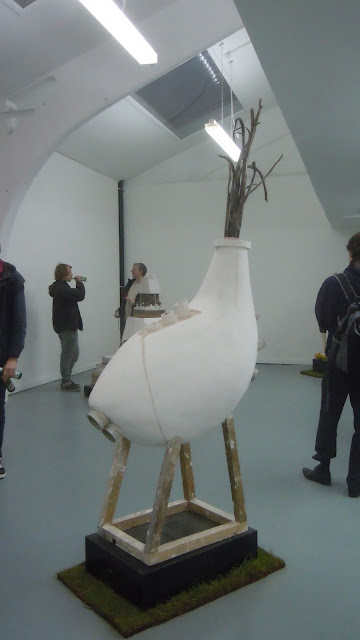For BV Open studios, Motorcade/FlashParade will be featuring a show of BV studio holders work, selected and curated by artist Chris Barr:
Remote Viewing
Laurence Kell
Catherine Knight
Esme Clutterbuck
Myles Donaldson
Alex Hardy
Simon Ledson
Robert Lang
Gareth Pitt
Phil Young
Remote Viewing…
I should acknowledge that at the time of selecting the works for this show my only means of knowing them did not allow for the intimacy or immediacy they deserve. Initially at least, I had to suffice with the only means available to the long-distance curator – the jpeg, or more precisely the file-sharing website Dropbox. But in the process of making this selection on behalf of the BV artists that submitted work, perhaps I have become more aware of what is at stake when, as an artist myself, I endeavour to document my own work and abandon it to the countless calls for open submissions and the merciless selection process that ensues. In addition to this, and perhaps more significantly, I can say that I have it in good faith (having recently moved in with two curators) that this is how one curates – with a laptop.
In recent years, it could be argued that we have become accustomed to seeing art purely as image, regardless of its physical status. As producers, we are not naïve to the importance of documentation as an essential level of mediation that stands between us and our audience. The increasing capacity with which iconic images circulate and pervade our culture, above and beyond the limitations of other media, was recently addressed by an art critic in relation to a particular generation of young British artists; despite creating for the best part sculptural work, they seemed to be preoccupied with making it overbearingly photogenic, rather than perhaps (in the modernist sense), a true reflection of our attempt to understand the spatial concerns of the subject within the built environment.
Faced with our incessant drive to document, philosopher Jean Baudrillard more or less claimed that in every way of life – in the symptomatic self-historicising and narrating of ones self, we sense that deep down, ‘all is invalidated’. Artists, we like to tell ourselves, offer an alternative to the dematerialisation of culture we are currently experiencing in the so called ‘information age.’ In the broadest terms the traditional experience of a work of art places emphasis on material gestures, which constitute an implicit part of the production of meaning, and it is this dialogue that seems to remind us of the duality that exists in the experience of looking. Even if we are encouraged to consider a work of art purely as an image, as we might when looking at a painting, it frequently manages to embody a tactile quality or a trace of this process.
I could have taken the title of this exhibition from the sculptural bust that occupies a more or less pivotal position within the space. Perhaps I’m entertained by the idea that all I’m doing in this text is projecting a narrative onto this work, as if by identifying with it’s look of perpetual scrutiny and distraction I'm giving it a voice in relation to everything that surrounds it. Either way, the notion of being Between Two Places seems to summarise an age-old conflict in relation to artistic production, namely the duality that exists between art as it is lived by the spectator on the one hand, and art as it is lived by the artist on the other.


































